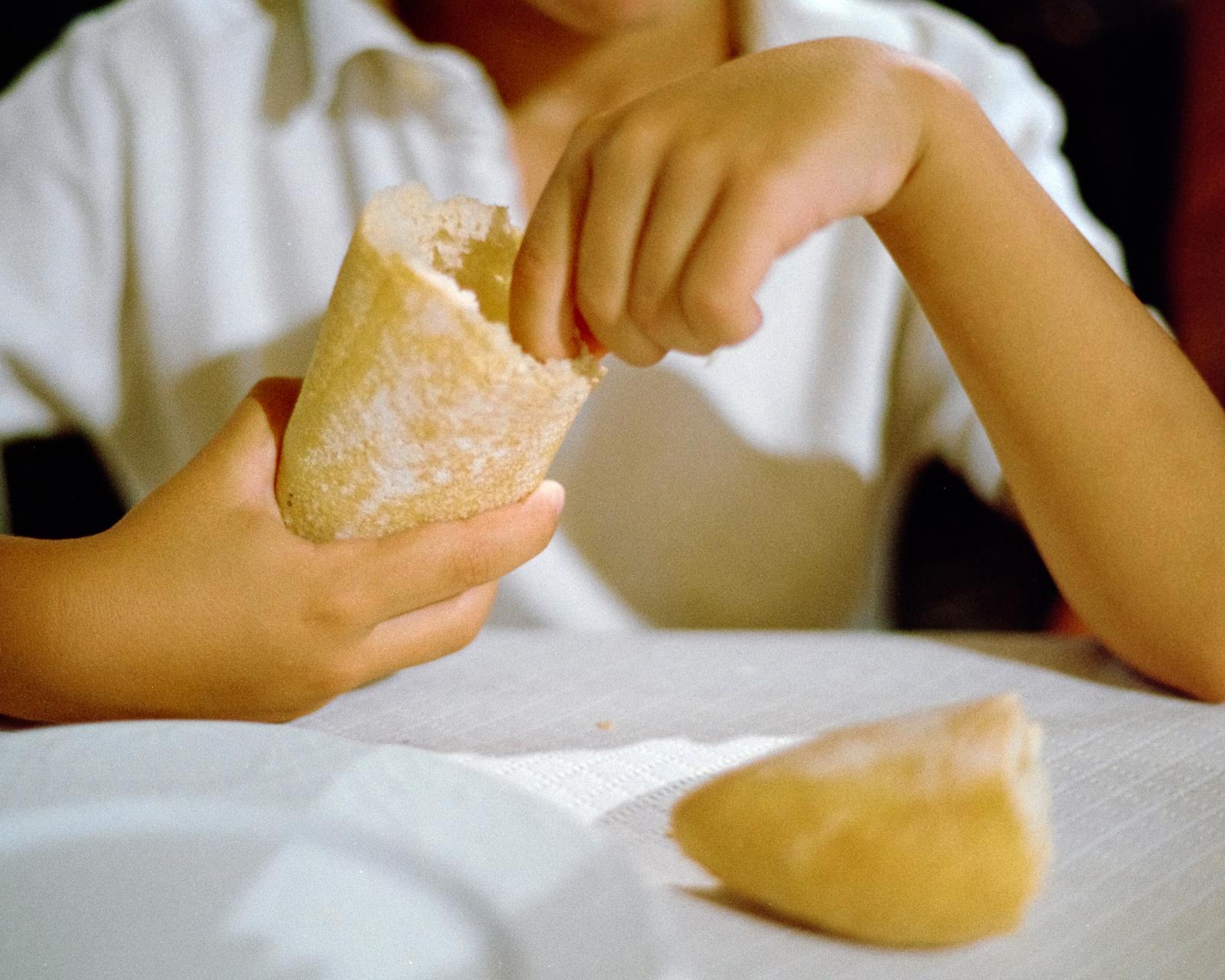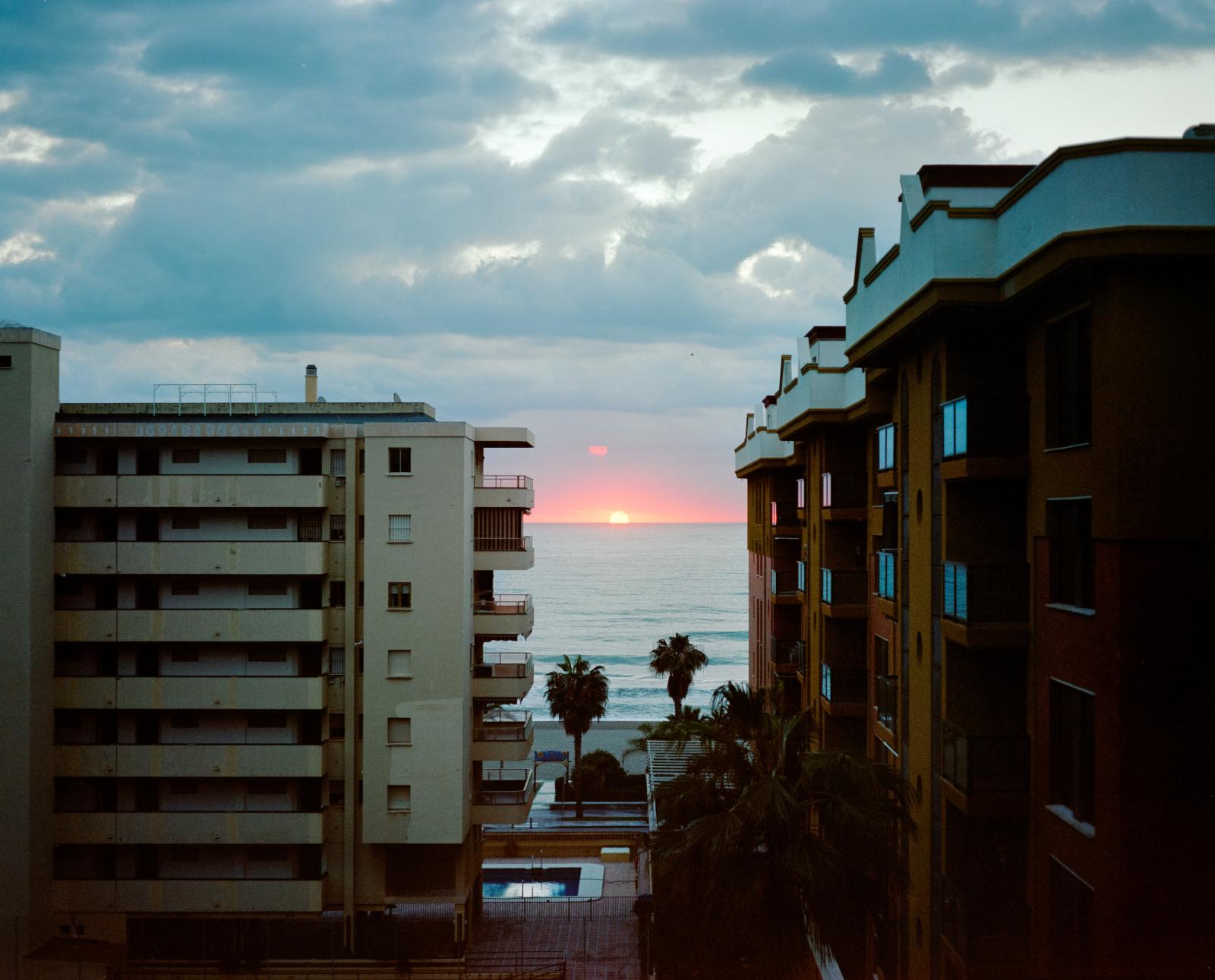Public Project
El nombre de algunos peces
“Existe siempre una geografía que corresponde a un temperamento. Falta encontrarla.” (1)
Hay peces que nadan en aguas frías o templadas, peces de agua dulce y otros que se deslizan por el oscuro fondo marino. Lo mismo ocurre con las personas. A veces decimos que nos sentimos como un pez fuera del agua, cuando realmente queremos decir que estamos nadando en aguas erróneas, que no son las nuestras. Según Michael Onfray, la geografía moldea el carácter y este, a su vez, hace buscar una determinada geografía, en un ciclo que se retroalimenta. Nos encontramos inmersos en este viaje en busca de nuestras propias aguas. De ese viaje, y de su final, trata esta exposición.
“El nombre de algunos peces” es la primera exposición individual de Juan David Cortés (1977, Mallorca). Su mirada atenta atestigua procesos de transformación dilatados en el tiempo, elaborando con ello preguntas sobre la vida, el cambio, el tránsito, el umbral. Preguntas que saben a sal. La exposición reúne una serie de fotografías que ha tomado a lo largo de los años, siempre en un mismo lugar: Torremolinos. Este antiguo pueblo pesquero, que floreció como destino turístico en los años 50, es un lugar anclado en su historia familiar. Es por ello que ha regresado con frecuencia.
Desde este escenario, sórdido y turístico, de una extraña belleza a la manera de las postales y los souvenirs, Juan David se interroga acerca de aspectos como el sentido de pertenencia. ¿Qué nos hace sentir que pertenecemos a un determinado lugar? ¿Son los vínculos con las personas que lo habitan? ¿Qué es lo que nos define como el turista, el lugareño, el otro? Fotografiar un lugar es, en el fondo, capturar nuestra relación con él. La cámara se convierte en un vehículo para explorar ese sentido de pertenencia. Pero, si los lugares cambian y así lo hacemos nosotros mismos, ¿Cómo podemos reencontrarnos con un lugar manteniendo el lazo que nos une al mismo? Quizá estos reencuentros solo sean posibles desde una continua hermenéutica del sí mismo, la construcción e interpretación del sentido como un proceso abierto... La disposición de las fotografías en el espacio expositivo parece darnos pistas sobre este proceso: el mar en calma al amanecer, las escenas domésticas, un cumpleaños, un escarabajo disecado, un buscador de tesoros recorriendo la orilla, la palmera que crece torcida, un cuerpo flotando en el agua, la curva cuyo final se oculta.
Teóricos como Rosalind Krauss o Roland Barthes han reflexionado sobre el valor de índice en la fotografía y cómo el referente se adhiere a la misma, conectándola íntimamente con temas como la desaparición, la muerte y el paso del tiempo. Pero también con el amor y la nostalgia. En palabras de Barthes,
“Diríase que la fotografía lleva siempre su referente consigo, estando marcados ambos por la misma inmovilidad amorosa o fúnebre, en el seno mismo del mundo en movimiento: están pegados el uno al otro, miembro a miembro, como el condenado encadenado a un cadáver en ciertos suplicios; o también como esas parejas de peces (los tiburones, creo, según dice Michelet) que navegan juntos, como unidos por un coito eterno.” (2)
Si la fotografía nos permite revivir muchas veces un acontecimiento único del que nos alejamos temporalmente, no es de extrañar que la memoria de un fotógrafo se acumule en carretes. La memoria se construye y puede recorrerse también como un lugar físico. Quizá esta exposición no sea más que una excusa para perderse por los propios recuerdos. Pero tal vez, esos recuerdos ajenos nos interpelen a todos, especialmente a aquellos que seguimos en el viaje hacia nuestras propias aguas tranquilas.
Esmeralda Gómez Galera. Palma, 2024.
(1) Onfray, Michel. Teoría del viaje. Poética de la geografía. Barcelona: Taurus, 2016. Pág. 25.
(2) Barthes, Roland. La cámara lúcida. Nota sobre la fotografía. Barcelona: Paidós, 1990. Pág. 33.
“Each temperament tallies with a given geography. It still remains to be found.” (1)
There are fish that swim in cold or temperate waters, freshwater fish, and others that glide along the dark ocean floor. The same is true of people. Sometimes we say we feel like a fish out of water when what we really mean is that we are swimming in the wrong waters, waters that are not our own. According to Michael Onfray, geography shapes character, and character, in turn, seeks out a particular geography, in a self-perpetuating cycle. We are all immersed in this journey in search of our own waters. This exhibition is about that journey, and its end.
"El nombre de algunos peces" (the name of some fish) is the first solo exhibition by Juan David Cortés (1977, Mallorca). His attentive gaze bears witness to long processes of transformation, raising questions about life, change, transition, and thresholds. Questions that taste of salt. The exhibition brings together a series of photographs taken over the years, always in the same place: Torremolinos. This former fishing village, which blossomed into a tourist destination in the 1950s, is a place deeply rooted in his family's history. It is for this reason that he has returned often.
From this setting, both sordid and touristic, with a strange beauty reminiscent of postcards and souvenirs, Juan David explores questions about the sense of belonging. What makes us feel like we belong to a particular place? Is it the bonds with the people who inhabit it? What defines us as tourists, locals, or others? Photographing a place is, at its core, capturing our relationship with it. The camera becomes a vehicle for exploring that sense of belonging. But if places change and we change along with them, how can we reconnect with a place while maintaining the bond that ties us to it? Perhaps these reunions are only possible through a continuous hermeneutics of the self, the ongoing construction and interpretation of meaning as an open process. The arrangement of the photographs in the exhibition space seems to offer us clues about this process: the calm sea at dawn, domestic scenes, a birthday, a dried beetle, a treasure hunter walking along the shore, the crooked palm tree, a body floating in the water, the curve whose end is hidden.
Theorists like Rosalind Krauss and Roland Barthes have reflected on the indexical value of photography and how the referent adheres to it, intimately connecting it with themes such as disappearance, death, and the passage of time, but also with love and nostalgia. In Barthes' words:
“It is as if the Photograph always carries its referent with itself… both affected by the same amorous or funeral immobility, at the very heart of the moving world: they are glued together, limb by limb, like the condemned man and the corpse in certain tortures; or like those pairs of fish (sharks, I believe) which navigate in tandem, as Michelet says, ‘as if united by an eternal coitus.’” (2)
If photography allows us to relive a unique event from which we have temporally distanced ourselves, it is no surprise that a photographer's memory accumulates in rolls of film. Memory is constructed and can also be traversed like a physical place. Perhaps this exhibition is nothing more than an excuse to get lost in one's own memories. But perhaps, these memories of others also speak to us all, especially to those of us still on the journey toward our own tranquil waters.
Esmeralda Gómez Galera.
Palma, 2024.
(1)Onfray, Michael. The Theory of Travel. Translated by James Scott. University of Chicago Press, 2011, p. 45.
(2)Barthes, Roland. Camera Lucida: Reflections on Photography. Translated by Richard Howard. Hill and Wang, 1981, p. 6.
1,018





















